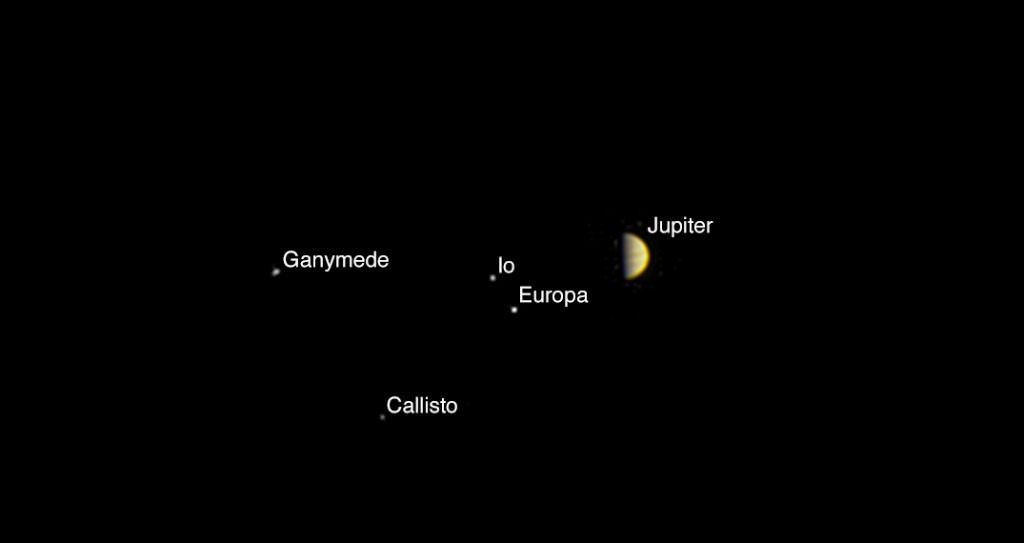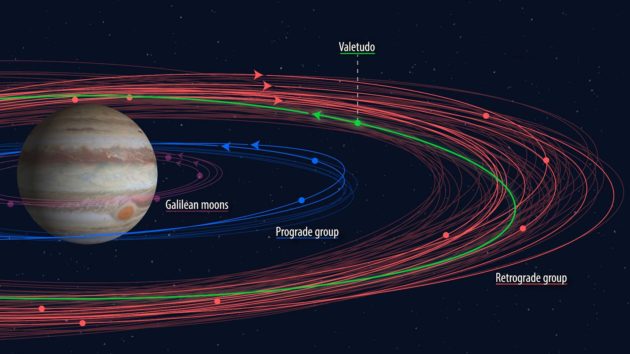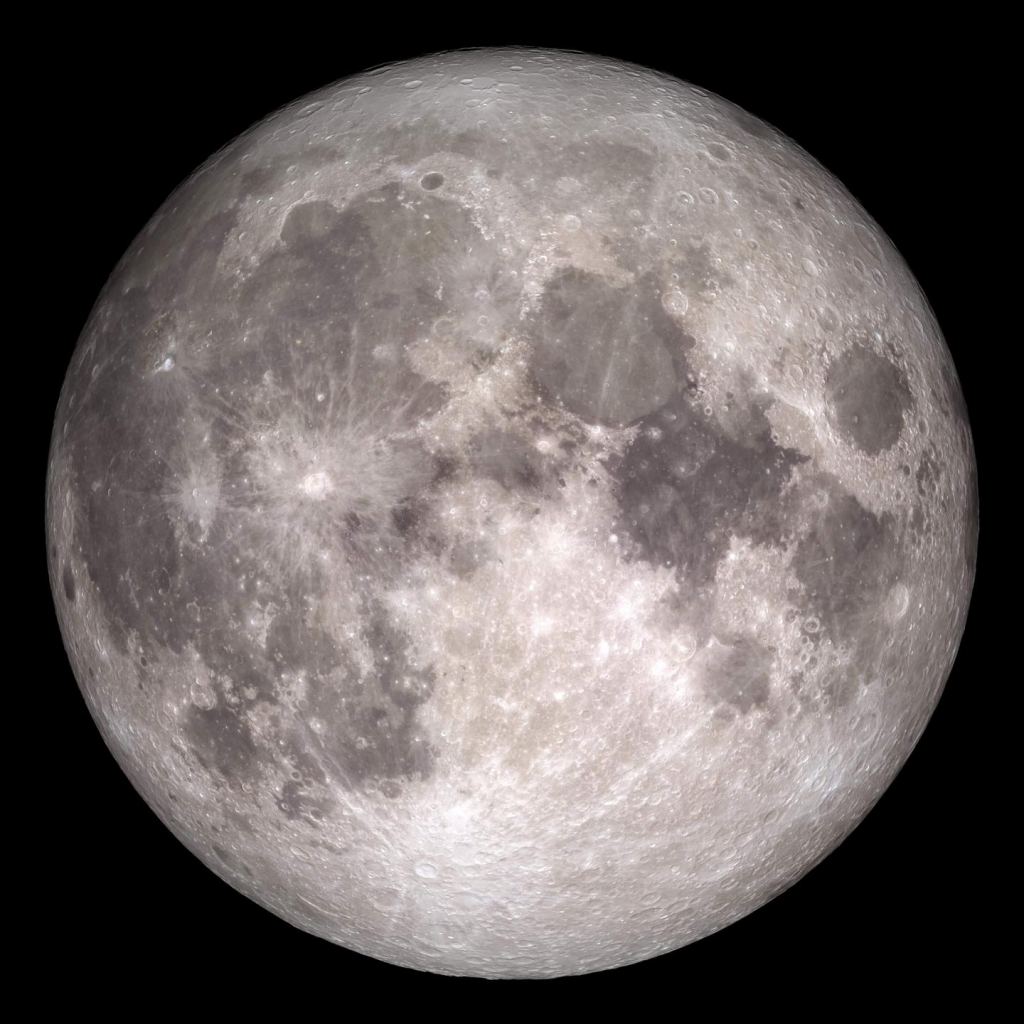The better our technologies get, the better we get at finding objects in space. That’s certainly true of Jupiter and its moons. Prior to Galileo, nobody knew the other planets had moons. Then in 1609/10, as he made improvements to his telescope, he aimed it at the gas giant and eventually found four moons: Io, Europa, Ganymede, and Callisto. Now those four natural satellites also bear his name: the Galilean moons.
Over the centuries since then, and especially in our digital age, astronomical tools and methods kept improving. In particular, wide-field CCD (Charge Coupled Devices) have led to an explosion of astronomical discoveries. In recent years, the confirmed number of Jovian moons has risen to 79. Now, a new study says that there may be 600 small irregular moons orbiting Jupiter.
The title of the new study is “The population of km-scale retrograde jovian irregular moons.” The lead author is Edward Ashton from the Department of Physics and Astronomy at the University of British Columbia. The authors will present their findings at the virtual Europlanet Science Congress 2020.
To be clear, the team of astronomers did not actually see 600 moons. Instead, they pored over archival 2010 data from the Canada-France-Hawaii Telescope. They searched a small area of the sky in that data—about one square degree—and found four dozen small, irregular moons. Based on that, they extrapolated the number of small moons that should be orbiting Jupiter, arriving at the 600 number.
There are two categories of moons: regular and irregular. While regular moons form by accretion of material in a disk, the same way planets do, irregulars are captured objects. In this study, the team of researchers found an abundance of small irregular moons, objects captured by Jupiter’s powerful gravity.

In 2017, researchers published a study announcing the discovery of 12 more irregular moons orbiting Jupiter. Prior to this new research, the number of known Jovian irregulars was 71. And scientists have speculated for years that Jupiter has an undiscovered population of smaller moons. Some astronomers have said that the large giants all have the same number of satellites, despite differences in their masses. It’s just that they’re hard to see.
The Canada-France-Hawai‘i Telescope on Mauna Kea played a central role in this work. That telescope has a powerful digital camera called the MegaCam. It’s a 340 megapixel wide-field imager that sees in the optical and the near-infrared. In this study, the astronomers focused on 60 exposures of 140 seconds each of a region near Jupiter.
Their method involved what the team calls a “shift-and-stack parameter space for the data set.” That method can reveal smaller, fainter moons hidden in the data. Basically, there are 126 ways to combine these images, by digitally shifting and stacking them, to mimic all the possible speeds and directions that these new, potential Jovian moons might travel across the sky.
The team of astronomers found 52 objects in their images which they identified as irregular moons. The objects had magnitudes down to 25.7, and that corresponds to objects with diameters of approximately 800 meters (875 yards.) Of those 52, seven of the brightest were already-known irregular moons. While those seven are prograde moons, the other 45 are very likely retrograde moons, meaning they orbit opposite of Jupiter’s direction of rotation.
From that data, the team extrapolated to arrive at their total of 600 irregular Jovian moons.

These are not confirmed discoveries, yet. Confirmation requires observation with large, ground-based telescopes. Considering the small sizes, and the time it takes to for each moon to complete an orbit, that’s a huge task. There may not be enough scientific value in confirming all these tiny objects to justify all of that sought-after observing time.
In an interview with Sky and Telescope, lead author Edward Ashton said there are no plans for follow-up observations to confirm these findings. “It would be nice to confirm them,” Ashton said, “but there is no way to track them without starting from scratch.”
Unlike Jupiter’s larger moons, like Io, Europa and Ganymede, these irregular moons did not form by accreting material in a disk. Instead, they likely formed as stand-alone Solar System objects in heliocentric orbits. Through some uncertain mechanism, they were eventually captured into their orbits around Jupiter. Their capture may have been due to “gas drag, pull down due to sudden mass growth and threebody interactions,” the authors write in their paper.
This study also raises an interesting question: What, exactly, is a moon?

At what point is an object small enough to no longer be considered a moon? There are bound to be all kinds of boulders, rocks, and dust orbiting planets. Some small satellites are referred to as moonlets, but there’s no agreed upon definition of that, either. Is something that’s only 100 meters (328 ft.) in diameter really a moon? A moonlet? Is there a cutoff?
The International Astronomical Union doesn’t name objects smaller than one km (0.62 mi) in diameter, so none of these objects will get recognizable names. And their confirmation will have to wait for some future day. It’s possible that the Vera Rubin Observatory, which will have the power to detect dim, transient objects in the Solar System, can confirm the existence of these moons, and more.
These results are an interesting new chapter in our understanding of Jupiter. We’ve gone from Galileo’s 1610 observation of four moons orbiting the planet, to this new study, involving powerful telescopes with advanced digital cameras, and complex computer-based methods of examining the data.
Now, we know that Jupiter’s moons include the largest natural satellite in the Solar System (Ganymede), a volcanic moon (Io), and moons with oceans under a layer of ice (Europa.) We’re even sending a spacecraft, NASA’s Europa Clipper, just to study one of Jupiter’s moons more closely, seeking signs of life.
What will the future hold?
More:
- New Research: The population of km-scale retrograde jovian irregular moons
- Wikipedia: Jupiter’s Moons
- Universe Today: Even Though it Hasn’t Launched Yet, JUICE Took its First Images of Jupiter and its Moons

